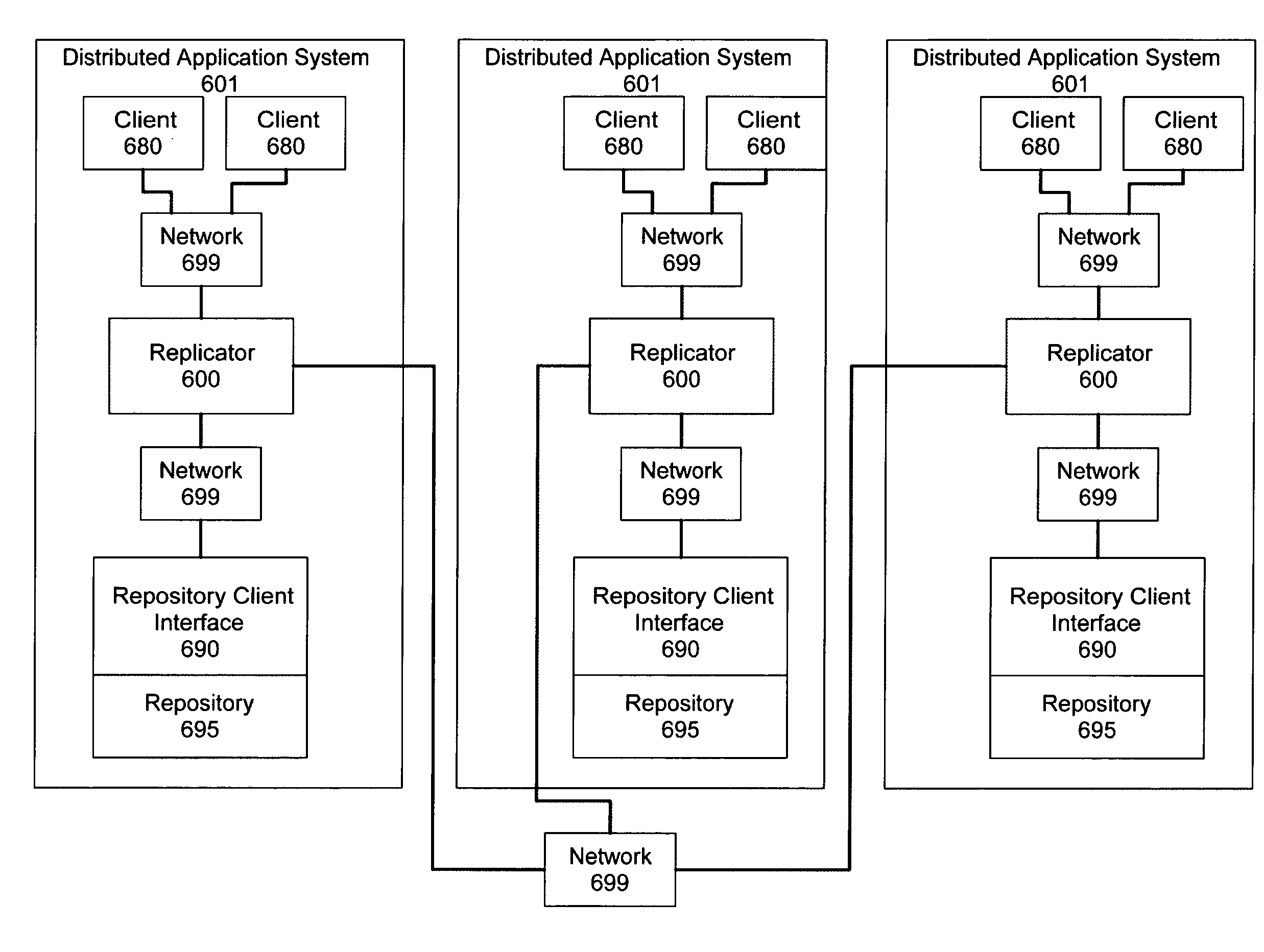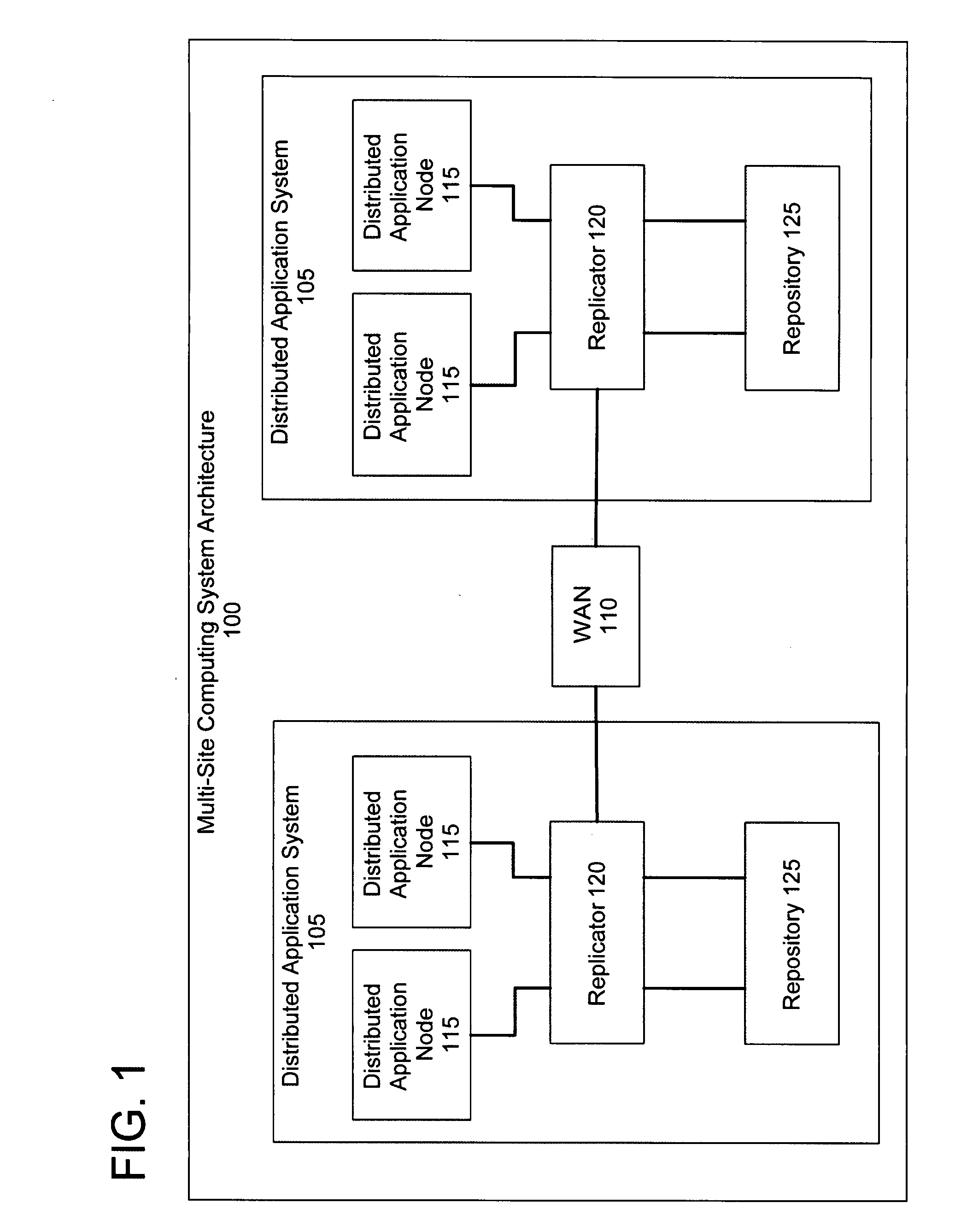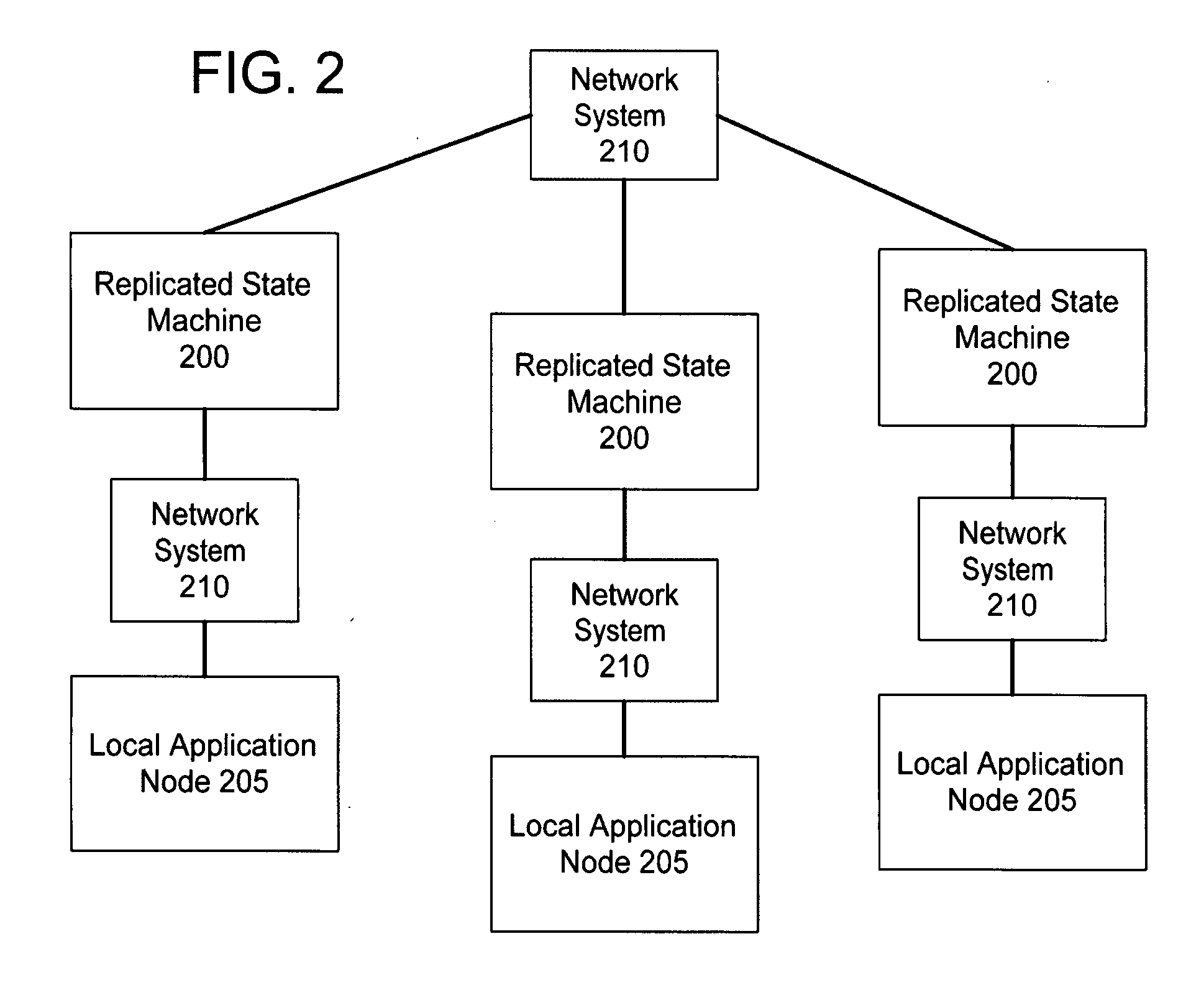Method for managing proposals in a distributed computing system
a distributed computing system and distributed computing technology, applied in the direction of pulse technique, multi-programming arrangement, instruments, etc., can solve the problems of affecting the effectiveness of conventional distributed multi-site collaborative computing solutions, affecting the ability to synchronize work from globally distributed development sites in real-time, and increasing risk, so as to facilitate management, facilitate the effect of scalability, reliability, availability and fault tolerance of a replicated state machin
- Summary
- Abstract
- Description
- Claims
- Application Information
AI Technical Summary
Benefits of technology
Problems solved by technology
Method used
Image
Examples
Embodiment Construction
[0035]Disclosed herein, in accordance with the present invention, are various aspects for facilitating a practical implementation of a replicated state machine in a variety of distributed computing system architectures (e.g., distributed multi-site collaborative computing system architecture). A skilled person will be aware of one or more conventional implementations of a replicated state machine. For example, such a conventional implementation of a state machine is disclosed in the publication entitled “Implementing fault-tolerant services using the state machine approach: A tutorial” (pages 299-319), authored by F. B. Schneider, published in ACM Computing Surveys 22 in December of 1990 and is incorporated herein by reference in its entirety. With respect to conventional implementation of a state machine in a distributed application system architecture and as discussed below in greater detail, embodiments of the present invention enhance aspects of scalability, reliability, availab...
PUM
 Login to View More
Login to View More Abstract
Description
Claims
Application Information
 Login to View More
Login to View More - R&D
- Intellectual Property
- Life Sciences
- Materials
- Tech Scout
- Unparalleled Data Quality
- Higher Quality Content
- 60% Fewer Hallucinations
Browse by: Latest US Patents, China's latest patents, Technical Efficacy Thesaurus, Application Domain, Technology Topic, Popular Technical Reports.
© 2025 PatSnap. All rights reserved.Legal|Privacy policy|Modern Slavery Act Transparency Statement|Sitemap|About US| Contact US: help@patsnap.com



